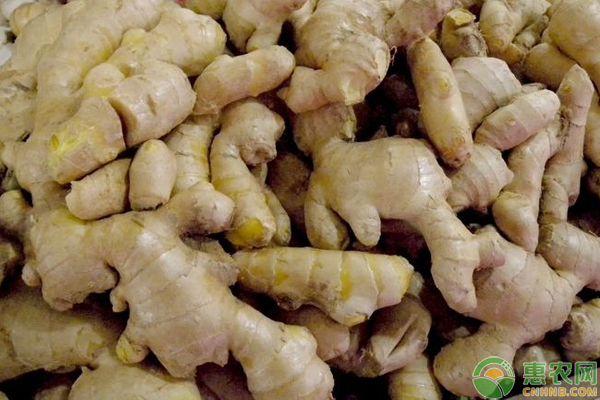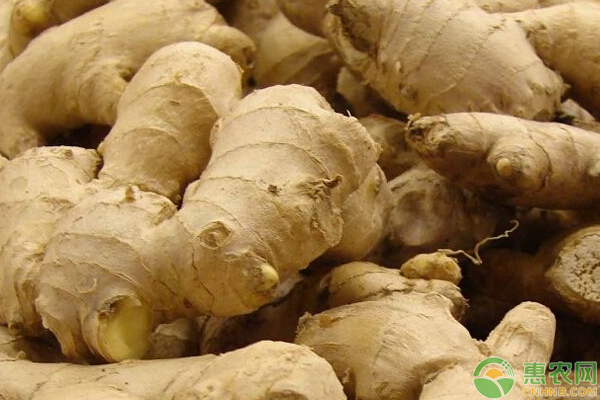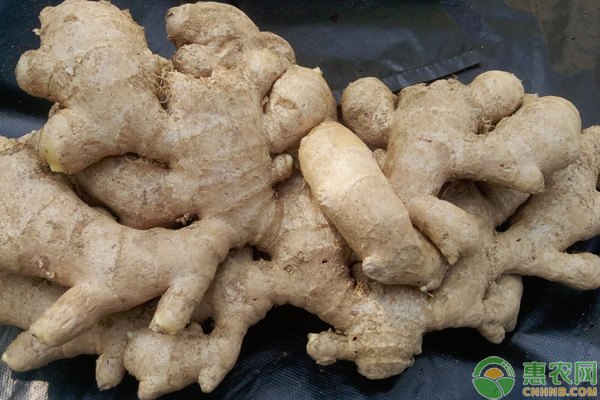With the improvement of living water products, people's quality requirements for daily necessities are getting higher and higher. Nowadays, the market is popular with ecological green products. As a daily flavoring agent, do you know the ecological cultivation methods of ginger? If you don't know, you can learn with Xiaobian!

Southern selenium-enriched ginger ecological planting skills:
1 Preparation before sowing
1.1 Strictly choose the land, avoid continuous cropping, and apply the base fertilizer to choose a plot with a certain slope, slightly yin, loose soil, deep soil layer, rich organic matter, good water permeability, good drainage and irrigation, and strong water and fertilizer retention. The land is suitable. The soil type is best in sandy loam, loam, clay loam or heavy loam. Selenium-enriched ginger is not suitable for continuous cropping, and should be rotated with legumes, rice, cruciferous, etc. according to the cycle of 3 to 4a. In the spring, combined with the temperature rise in Chongqing, the land preparation was carried out in time to reach the standard that the soil has no large shovel and the upper part is loose. Ginger has the characteristics of long growing period. Therefore, the base fertilizer should be applied at the same time as the ground preparation, and the potassium fertilizer (composite fertilizer) can be applied with 375-450 kg/hm2+ fully decomposed organic fertilizer 45t/hm2.
1.2Selected ginger species to promote early hair harvesting in the first year, choose color light yellow, full growth, individual hypertrophy, fresh, shiny, smooth skin, no pests and diseases, 1 or 2 strong buds, single weight 50 to 75 g of rhizome as a kind of ginger. And take the squat storage or stratify (a layer of sand layer of ginger) piled indoors for storage. Before planting, the ginger will be removed to remove the sticky soil on the surface, and the rot, moldy, and weak ginger will be removed. In order to make it germination as soon as possible, the ginger can be soaked in a solution of 50% carbendazim 500 times liquid to achieve a better disinfecting effect. Then choose to sterilize the ginger in the sun for 2 to 3 days on sunny days from 8:00 to 9:00. When the surface of the ginger is bright, the germination is carried out by means of heat preservation, that is, the straw is covered, and the temperature is controlled at 20 ~25 °C (previous high, late low), keep the wet state (humidity is 80% ~ 85% is appropriate), when the bud of ginger is germinated to a length of about 1cm, it can be combined with the size and strength of ginger buds. Sowing; it can also be germinated by means of pesticide soaking, that is, the ginger is spread out first, dried for 1-2 days, then immersed in a 1:1:120 Bordeaux solution, taken out after 10 minutes, and layered with wet sand. (Thickness is 30 ~ 40cm), covered with a film, placed at a temperature of 20 ~ 30 ° C, 8 ~ 10d can be sown. In recent years, the Chongqing region has successfully developed the detoxified ginger by improving the ginger varieties. When applied to production, the risk of planting ginger for the growers is greatly reduced, and the yield is increased by about 30%.

2 timely sowing
Reasonable close planting in the case of better irrigation conditions, high temperature, no germination, sowing time should be selected (around March 5); in the case of poor irrigation conditions, low temperature, need to germination, sowing time It should be chosen from around (April 5th to April 10th). According to the way of germination, you can choose hole planting or striping. Before the planting, the hole should be opened at a depth of about 15cm according to the row spacing of 40cm×30cm, and the diluted manure water should be poured into the soil. After fully infiltrating into the soil, the ginger is put into the hole, and then one hole is planted. Cover the fine soil and fertilizer with the sieve. The strips are firstly opened to a depth of 10 to 20 cm, and the control line spacing is 35 to 40 cm. The base fertilizer is applied and placed in the ginger, the plant spacing is about 27 cm, and then the soil is covered and kept level with the ground. The seed amount is about 7.5t/hm2. Pour sufficient water 1 h before sowing to keep the soil in a wet state before planting. The ginger is placed horizontally at the time of sowing, keeping the young shoots in one direction, pressing them gently into the soil by hand, and finally covering them with a wet soil having a thickness of about 5 cm. In 2014, the Linfeng Community of Deyi Street promoted the ginger hole drilling machine invented by local ginger farmers in the cultivation of selenium-enriched ginger, which greatly improved the efficiency and stimulated the local enthusiasm for planting ginger.
3 fine management
3.1 Stem management, scientific fertilization After the seedlings are unearthed, when the length of the stem reaches about 30cm, it is necessary to carry out the scaffolding in time. Use a wooden stick with a finger diameter of 1.5 to 1.8 m in length and a bamboo stalk to insert the hole and the outer edge of the groove. Each of the cuttings is inserted into the hole, and each of the four is 1.2 to 1.4 m from the ground and tied with a rope to form an "X". Type, in order to carry out field operations such as weeding and topdressing. Grow the ginger vines to the shelf, pay attention to the height of the stems to grow, not too high. When the height of the main stem vine reaches 1.4-1.5m (almost coincident with the top of the rack) or the length of the side branch is 20-30cm, it should be topped in time to prevent excessive growth; ginger is bud, flowering period, every 10d Remove the flower buds one by one to promote the nutrients to the underground rhizomes as much as possible, and improve the yield of ginger. The growth of selenium-enriched ginger is long and the demand for fertilizer is also high. In addition to applying enough base fertilizer, multiple top dressings are required. The types of top dressing mainly choose compound fertilizer and organic fertilizer. When the number of seedling branches reaches 1 to 2 and the height is up to about 30 cm, 300 kg/hm2 of urea is applied or the seedlings are applied as top dressing with clear manure water; before and after August, it is opened at a distance of about 15 cm from the ginger plants. Ditch, topdressing potassium 365kg / hm2, compound fertilizer 750kg / hm2, then cover the soil and watering, so that the fertilizer dissolves as soon as possible, prevent burning seedlings; in order to ensure adequate nutrition when the underground rhizome of ginger begins to expand , topdressing potassium sulfate 230 ~ 320kg / hm2, urea 125 ~ 250kg / hm2.

3.2 Drought and flood prevention, shading and cooling The selenium-enriched ginger is not resistant to drought and locust disasters, and has strict requirements on water conditions. It cannot accumulate water or water. Therefore, in the water management, the soil can be kept in a humid state. In the high temperature period, the growth of selenium-enriched ginger should be combined in time to water in the morning and evening to reduce the temperature in the field, and the water in the field when it rains. Dispose of in time to prevent disasters. Do not water for about 10 days before harvest. If the roots of selenium-enriched ginger grow above the ground, the skin will be thickened and the quality will be reduced. Therefore, the soil should be covered in time, and the thickness should be about 3cm. Generally, the soil should be covered 2 to 3 times on the basis of fertilizer management. Selenium-enriched ginger is grown in shades, where the temperature is suitable and where there is no strong light. Therefore, in the summer when the light is strong and the temperature is high, shading should be carried out to ensure the healthy growth of selenium-enriched ginger. It can take the form of scaffolding and intercropping with high-stalk crops such as corn, and the effect is more obvious.
3.3 Pest Control The common pests and diseases in the production of selenium-containing ginger mainly include: spot disease, rot disease, ginger rot disease, soft rot disease, root knot nematode disease, ginger mites, and special-shaped eye mites. In prevention and treatment, we must adhere to the method of prevention and prevention. Ecological planting should adopt agricultural prevention, physical control, and biological control methods as much as possible, and use less chemicals to control, such as low-toxic, low-residue, non-polluting agents. For the prevention and treatment of spot disease, 50% chlorothalonil 800 times solution can be selected for spraying, and sprayed once every 7 to 10 days. The rot disease usually begins in July and occurs from August to September. Once the plant is found to be ill, it should be removed in time for centralized treatment, and the soil carrying the pathogen should be dug, sprinkled with lime, etc., and then filled in clean, Soil without germs. For the prevention and treatment of ginger rickets, the soil can be disinfected with an appropriate amount of lime nitrogen; the rotation is changed, and the ginger species that are disease-free are selected; once the diseased plant occurs, it should be removed in time, and the selenium-rich ginger plants within 50 cm can be removed. They are all removed, and the soil carrying the germs is dug, sprinkled with lime, etc., and filled with clean, disease-free soil. Prevention and control of soft rot, rotation, ginger sterilization, etc., can be rooted with 50% metalaxyl WP 800-100 times liquid, the effect is better. For the control of root-knot nematode disease, the soil can be fumigated by chloropicrin, etc., and 1.8% avermectin 2000 times solution can be used for rooting treatment. It is necessary to timely watering once after each irrigation. The control of Jiangyan can be treated by clearing the pastoral and artificially capturing. It can also be sprayed or injected into the insect mouth with 50% killing pine oil 500-800 times liquid, which has good effects. For the prevention and treatment of the alien-shaped eyelid mosquito, the cockroach can be thoroughly cleaned before the ginger is introduced into the cockroach, disinfected with 80% dichlorvos 1,000 times, or fumited with dichlorvos in the cockroach; carefully selected ginger, once the worm is found, immediately After elimination, the ginger can also be soaked in 80% dichlorvos 1000 times liquid, usually about 8 minutes, which can effectively prevent insects from passing to the field.
3.4 timely harvesting The target products of selenium-enriched ginger are mainly composed of ginger, ginger and fresh ginger. The target products are different and the harvesting methods are different. Ginger is generally not suitable for decay in the soil. The weight after germination grows new plants is almost unchanged, and its spicy taste is increased. Therefore, ginger grows 5 to 6 leaves and the seedling height is about 25 cm. Ginger harvested. The harvest of tender ginger is generally carried out just after entering the autumn. At this time, the roots of ginger are growing rapidly. The branches of the plants are luxuriant and the ginger is fresh. For tender ginger, the earlier the harvest time, the better the quality, but the lower the yield; the later the harvest time, the higher the yield, but the fiber content of the rhizome increases and the quality is not good. Therefore, the harvest of tender ginger should be timely. Harvesting of fresh ginger is generally carried out on a sunny day before the local first frost and when the roots of the ginger plants are ripe. In order not to damage the fresh ginger, water should be properly watered a few days before harvest to ensure that the soil is loose and the soil is wet.
Ginger is a flavoring that people eat every day, so the market prospect is not small, so the eco-planting techniques of selenium-enriched ginger shared by Xiaobian can be seen.
Carbomer is an acrylic resin obtained by cross-linking pentaerythritol with acrylic acid. It is a very important rheological regulator. After neutralization, carbomer is an excellent gel matrix, which has important applications such as thickening suspension. According to the dry product calculation, including carboxylic acid group (-cooh) should be 56.0 % ~ 68.0%.
Common carbopol series include: Carbopol 940, 941, 934, 1342, 980, ETD 2020, AQUA sf-1, Ultrez 21, Ultrez 20, etc.
Carbomer,Carbopol,Carbopol 940, Carbomer 940, Carbomer 980, acrylic acid
Xi'an Gawen Biotechnology Co., Ltd , https://www.ahualynbio.com